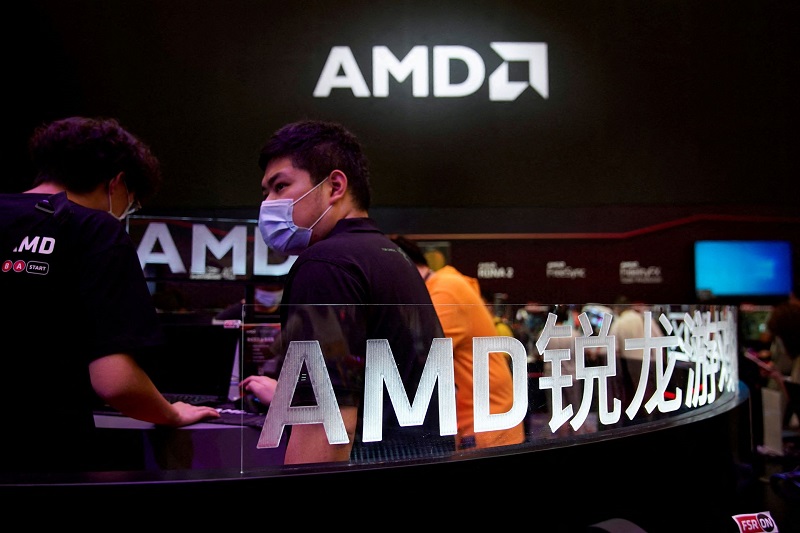AMD (NASDAQ:AMD) Posts Better-Than-Expected Sales In Q3 But Quarterly Guidance Underwhelms
Computer processor maker AMD (NASDAQ:AMD) reported Q3 FY2023 results beating Wall Street analysts’ expectations, with revenue up 4.22% year on year to $5.8 billion. However, next quarter’s revenue guidance of $6.1 billion was less impressive, coming in 4.53% below analysts’ estimates. Turning to EPS, AMD made a non-GAAP profit of $0.70 per share, improving from its profit of $0.67 per share in the same quarter last year.
Is now the time to buy AMD? Find out by reading the original article on StockStory.
AMD (AMD) Q3 FY2023 Highlights:
- Revenue: $5.8 billion vs analyst estimates of $5.69 billion (1.87% beat)
- EPS (non-GAAP): $0.70 vs analyst estimates of $0.68 (3.59% beat)
- Revenue Guidance for Q4 2023 is $6.1 billion at the midpoint, below analyst estimates of $6.39 billion
- Free Cash Flow of $297 million, up 16.9% from the previous quarter
- Inventory Days Outstanding: 142, down from 154 in the previous quarter
- Gross Margin (GAAP): 51%, up from 49.7% in the same quarter last year
“We delivered strong revenue and earnings growth driven by demand for our Ryzen 7000 series PC processors and record server processor sales,” said AMD Chair and CEO Dr. Lisa Su.
Founded in 1969 by a group of former Fairchild semiconductor executives led by Jerry Sanders, Advanced Micro Devices or NASDAQ: (NASDAQ:AMD) is one of the leading designers of computer processors and graphics chips used in PCs and data centers.
Processors and Graphics ChipsThe biggest demand drivers for processors (CPUs) and graphics chips at the moment are secular trends related to 5G and Internet of Things, autonomous driving, and high performance computing in the data center space, specifically around AI and machine learning. Like all semiconductor companies, digital chip makers exhibit a degree of cyclicality, driven by supply and demand imbalances and exposure to PC and Smartphone product cycles.
Sales GrowthAMD’s revenue growth over the last three years has been impressive, averaging 42.5% annually. But as you can see below, this quarter wasn’t particularly strong, with revenue growing from $5.57 billion in the same quarter last year to $5.8 billion. Semiconductors are a cyclical industry, and long-term investors should be prepared for periods of high growth followed by periods of revenue contractions (which can sometimes offer opportune times to buy).
While AMD beat analysts’ revenue estimates, this was a sluggish quarter for the company as its revenue only grew 4.22% year on year. AMD’s growth, however, flipped from negative to positive this quarter. This encouraging sign will likely be welcomed by shareholders.
AMD returned to positive revenue growth this quarter and its management team expects the trend to continue. The company is guiding to 8.95% year-on-year growth next quarter, and analysts seem to agree, forecasting 18.9% growth over the next 12 months.
Product Demand & Outstanding InventoryDays Inventory Outstanding (DIO) is an important metric for chipmakers, as it reflects a business’ capital intensity and the cyclical nature of semiconductor supply and demand. In a tight supply environment, inventories tend to be stable, allowing chipmakers to exert pricing power. Steadily increasing DIO can be a warning sign that demand is weak, and if inventories continue to rise, the company may have to downsize production.
This quarter, AMD’s DIO came in at 142, which is 44 days above its five-year average. These numbers suggest that despite the recent decrease, the company’s inventory levels are higher than what we’ve seen in the past.
Key Takeaways from AMD’s Q3 Results Sporting a market capitalization of $155 billion, more than $5.79 billion in cash on hand, and positive free cash flow over the last 12 months, we believe that AMD is attractively positioned to invest in growth.
It was great to see a material improvement in AMD’s inventory levels. We were also excited its revenue and EPS outperformed Wall Street’s estimates, driven by strong sales for its Ryzen CPU chips that are used in desktop PCs. On the other hand, its revenue guidance for next quarter underwhelmed. Zooming out, we’ve observed broader weakness in the semiconductor industry as higher interest rates have resulted in lower consumer purchasing power and corporate capital expenditure budgets. We still think this was a decent, albeit mixed, quarter, showing that the company is staying on track. Investors were likely spooked by the company’s outlook, and the stock is down 4.51% after reporting. AMD currently trades at $94.07 per share.
The author has no position in any of the stocks mentioned in this report.
Read the full article here










